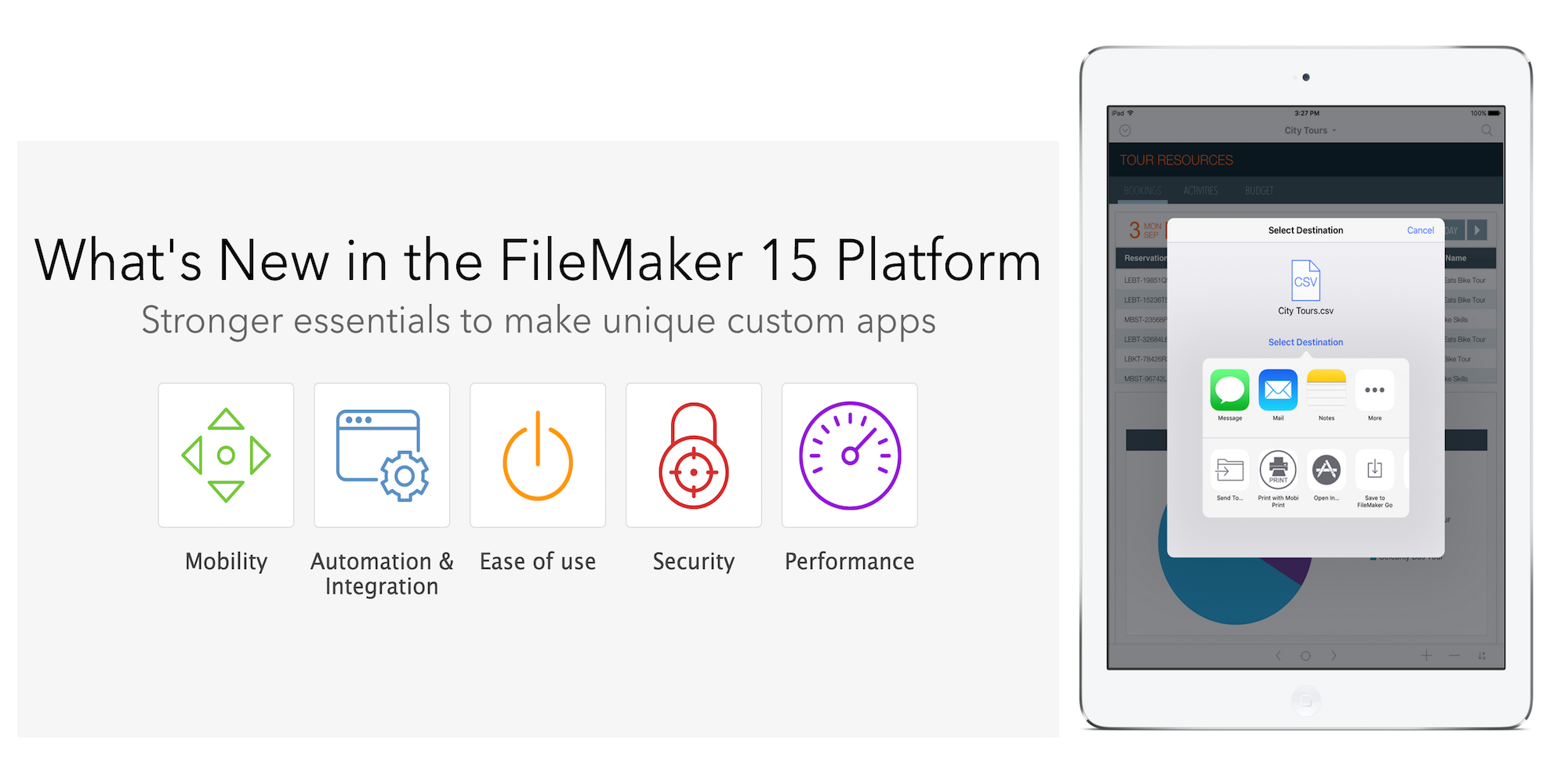

Track this information by using auto-enter field settings or by using the Get(AccountName) function in calculations and scripts. This allows you to track who is creating or modifying individual records or taking other actions in your solution. See Define privilege sets in this guide.Ĭreate a unique account for each user.

Each account is given specific access privileges based on the associated privilege set. System requirementsįileMaker solutions require users to authenticate with an account name and password combination. Security settings configured within FileMaker Server are server-specific and apply to all solutions hosted by the server.
FILEMAKER SERVER 15 UPDATE PRO
Security settings defined within a solution using FileMaker Pro apply only to the information and schema (layouts, tables, fields, relationships, and scripts) stored in that solution. The FileMaker platform employs a unified security model, where the security that you establish for a solution is in effect across all clients. FileMaker Server Admin Console allows you to monitor solution access, disconnect idle users, and create backups of your solutions. You can encrypt the data stored within a FileMaker solution, and you can require Secure Socket Layer (SSL) encryption of data between FileMaker Server and FileMaker Pro, FileMaker Go, and FileMaker WebDirect. Data encryption on the disk and over the wire.You can define as many privilege sets as needed. You define permissions that determine levels of access to your solution. Users can also authenticate via Active Directory or Open Directory. FileMaker encrypts credentials stored within solutions so the credentials can't be decrypted. The FileMaker platform's features help you control data access, operations, and development within a FileMaker file.


 0 kommentar(er)
0 kommentar(er)
